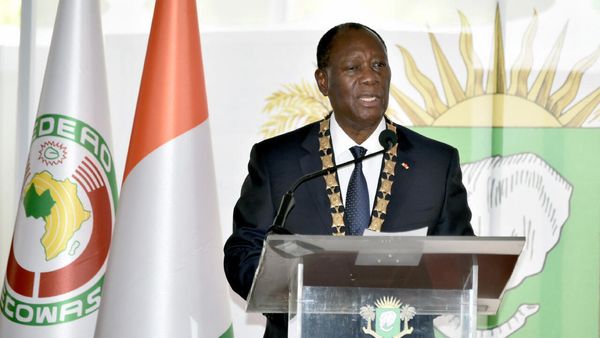
Australians’ wages grew in the September quarter as decisions by the Fair Work Commission and a tight labour market helped pay packets close the gap with inflation.
The country’s wage price index rose 1.3% in the quarter alone and 4% compared with the September quarter a year ago, the Australian Bureau of Statistics said on Wednesday.
The quarterly increase was the most since the series began in 1997 while the annual pace was the highest since the March quarter of 2009.
Economists had forecast a 1.3% increase for the quarter, and 3.9% for the year. By comparison, headline consumer prices for the period were up 1.2% in the quarter and were 5.4% higher for the year.
Private sector employees fared better than those in the public service. Private employers lifted wages 1.4% for the quarter and 4.2% from a year earlier, while those in the public sector had to make do with increases of 0.9% and 3.5%, respectively.
Michelle Marquardt, ABS head of prices statistics, said the private sector’s annual rise was the most since the final quarter of 2008, while the public sector increase was the most since June 2011.
The WPI is one of the measures the Reserve Bank uses to track whether there is any sign of a so-called price-wages spiral that may point to inflation being even harder than currently forecast to rein in.
In its quarterly update on monetary policy released last week, the RBA estimated the WPI would clock up an annual rate of 4% by December and retain that level until next June when it would finally exceed the annual consumer price index.
When inflation peaked at an annual rate of 7.8% in the December quarter of last year, wages only rose 3.3%, implying real wages were shrinking at a record 4.5%. That lag has now shrunk to about 1.4% in the latest quarter.
The initial market reaction was modest, implying traders didn’t read major implications for interest rates in today’s numbers. The dollar was hovering just higher than 64.9 US cents and stocks were holding on to their gains for the day of about 1.5% after weaker-than-expected inflation figures in the US.
ANZ economists Catherine Birch and Madeline Dunk said the wages data was “a touch higher than consensus and the RBA’s forecast”. It included a revision in the June quarter growth to 0.9% from an initial reading of 0.8%.
That change meant real wages had increased 0.1% for both the past two quarters.
“We don’t expect today’s data will change the RBA’s thinking ahead of its December meeting where we expect the RBA to hold the cash rate at 4.35%,” they said.
Brendan Rynne, KPMG’s chief economist, suggested the RBA would retain its “tightening bias” at its December rates meeting given the broad-based wage gains.
Of the states, only New South Wales, Victoria and South Australia recorded annual growth of less than 4%, Rynne said, with each of those also in the high 3% range. Queensland’s 4.7% annual increase was the nation’s highest.
The ABS’s Marquardt said jobs paid by individual arrangements “were the main driver of wage growth, with award and enterprise agreement jobs also contributing more to wages growth than historically seen in a September quarter”.
The @ABSStats said jobs paid by individual arrangements "were the main driver of wage growth" for the September quarter. Awards and enterprise agreements contributed the most for wages growth for any September quarter (since the series began in 1997). pic.twitter.com/UUcW0EXOa5
— @phannam@mastodon.green (@p_hannam) November 15, 2023
The higher private sector wage growth was buoyed in part by the Fair Work Commission decision to lift the pay of those on minimum and award wages, including a 8.6% increase for the 180,000 workers on the national minimum award.
An increase of 15% for workers in aged care also contributed the higher wages as did the relatively tight labour market. The jobless rate in September was 3.6%, or not far from half-century lows, with the ABS scheduled to provide Octobers figures on Thursday.
The accommodation and food services industry led the wage increases at both the quarterly and annual periods, rising 3.2% and 5.5%. “Some hospitality jobs received two award increases over the year, driving the higher-than-usual annual growth for this industry,” the ABS said.
By industry, accommodation and food services, and the health care and social assistance sectors led the wages gains. pic.twitter.com/n8zTrJudPr
— @phannam@mastodon.green (@p_hannam) November 15, 2023
Workers in the health care and social assistance sector posted the next largest increases at 3.1% for the quarter and 4.9% annually.
Laggards included the mining industry, which posted a wage increase of 0.8% for the quarter. The annual increase, at 4%, was in line with the 4% national average.
Finance and insurance jobs registered a 3.1% annual increase, the lowest among industry groups.







